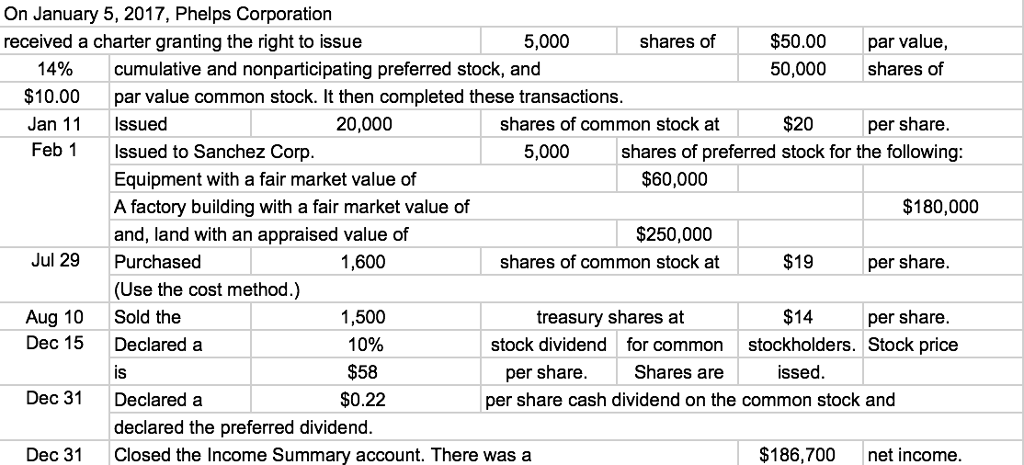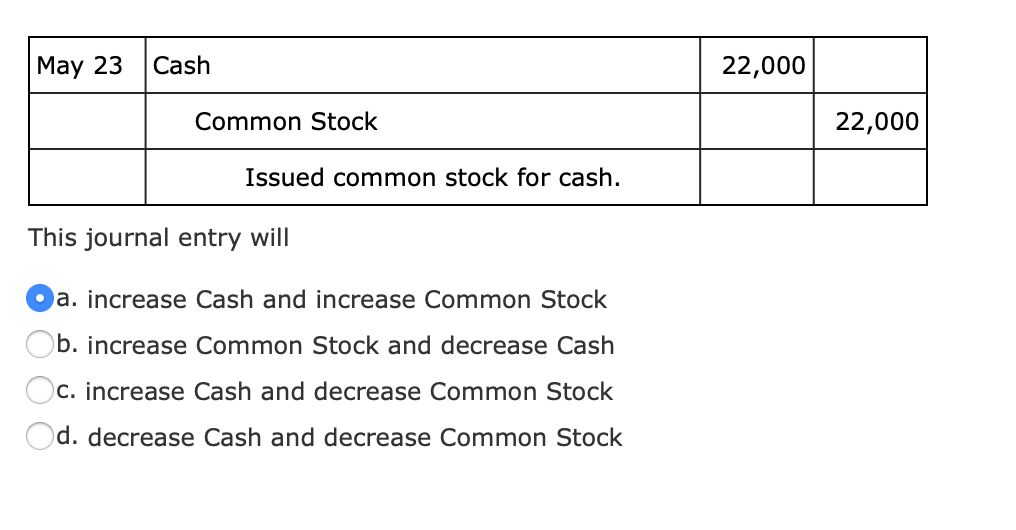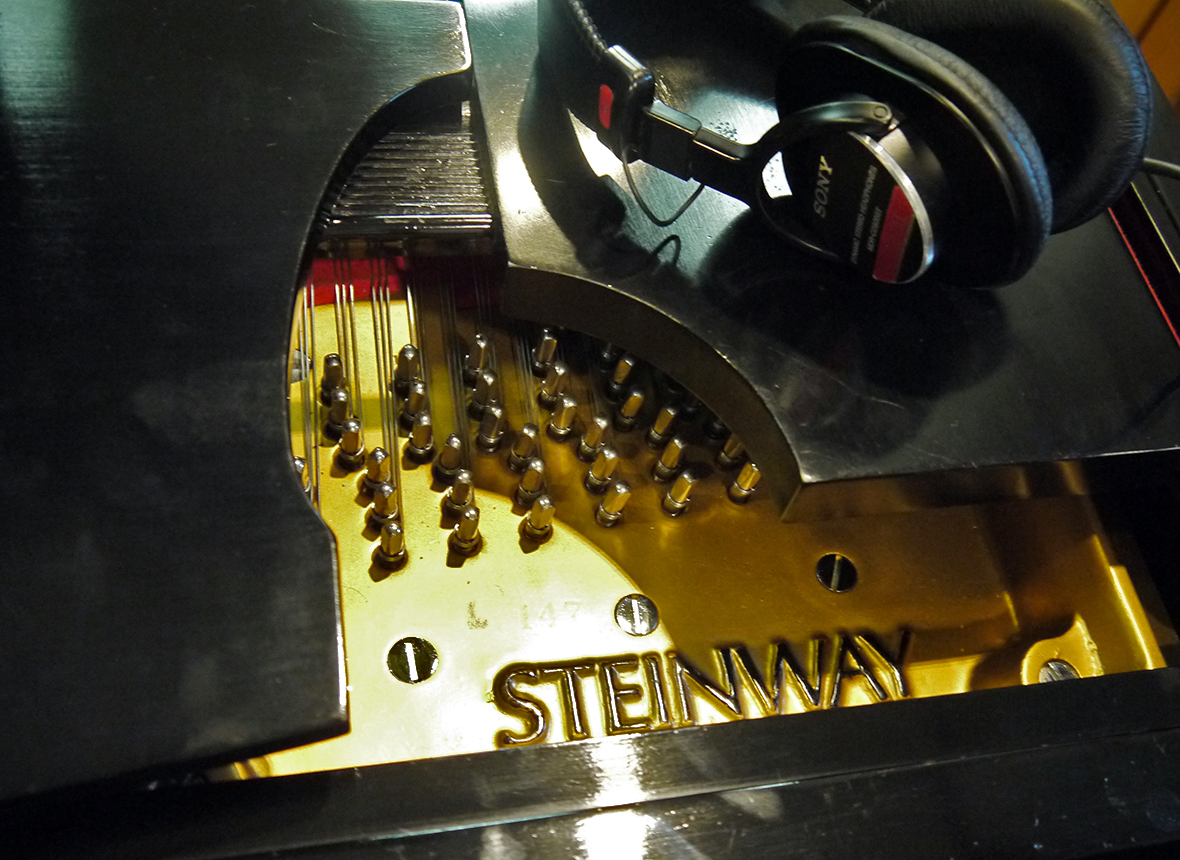Journal Entries to Issue Stock Financial Accounting

When the previously declared dividends are paid, the appropriate entry would require a debit to Dividends Payable and a credit to Cash. Common Stock or Common Share is the company equity instrument that represents corporation ownership. The company listed on the stock exchange and sell the ownership to the investors to raise the capital. The company wants to raise cash to pay off debt, expand the operation, acquire other company and support daily activities.
- The first will be using the cost method where a company is buying some of their own shares and later reissues them.
- The terms above may be better understood with an analogy to a credit card.
- The corporation’s charter determines the par value printed on the stock certificates issued.
- Corporations often set this figure so high that they never have to worry about reaching it.
A Closer Look At Cash Dividends
We would repeat the journal entries we created for the first call. So for completeness of the example, the following journal entries would be made by ABC’s accounts team. The debit to the bank account reflects the $400,000 ABC now has from its first call on the class A shares. And the credit to the call account can now be closed as this money is no longer due from shareholders. We also now have to start dealing with the premium or the additional capital above par. We know we have $400,000 sitting in the application account, but how much do we allocate to share capital account and a new account, Additional Paid-in Capital.
3: Issuing Stock for Cash
These voting rights allow the shareholders to dictate how the company operates. For example, they can elect the board of directors and vote on a company’s policies. However, the same rights are not a part of the other types of stock that companies offer, for instance, preferred stock. However, other sources of finance or equity do not have the same effect.

Please Sign in to set this content as a favorite.
If this stock was not selling on a stock exchange, fair value might not be apparent. In that situation, the Maine Company should recognize the land at its own fair value of $125,000 with an online bookkeeping services for small businesses bench accounting accompanying $5,000 increase in the capital in excess of par value account. The last example we will look at in the journal entry for the issue of common stock is company share buy-backs.
Common Stock Issued for Non-Cash Exchange
Common shares represent ownership in a company, and holders of common shares are entitled to a share of the company’s profits and assets. When a company issues common shares, it is effectively selling ownership stakes in the company to the investors who purchase the shares. In addition to the non-cash asset, we may also issue the common stock in exchange for the service instead. In this case, the debit side of the journal entry will be the expense amounting to the cost or the fair value of the service that needs to be charged to the income statement instead. The journal entry for issuing preferred stock is very similar to the one for common stock. This time Preferred Stock and Paid-in Capital in Excess of Par – Preferred Stock are credited instead of the accounts for common stock.
1Although the Kellogg Company has its headquarters in Battle Creek, Michigan, the company is incorporated in the state of Delaware. Thus, the laws of Delaware set the rights of the common stock shares for this company. The debit to the Treasure Stock account reflects the new asset ABC Ltd holds in its own stock. And the credit reflects the company pays Kevin to buy his position out. We have now reached December, and the second and final call for class A shares is now coming due.
The first is the allotment of the shares, and the second is to return the monies to those not awarded any shares. And in the last example, we will look at is a company buying back its own stock. This process is often referred to as a share buy-back or a Treasury stock purchase.
And the real value of how much a company’s shares are actually worth and sold for is the market value, not the par value. The par value of the common stock nowadays is usually just the number on the paper. Occasionally, a corporation may issue no-par stock, which is recorded by debiting Cash and crediting Common Stock for the issue price. A separate Paid-in Capital in Excess of Par account is not needed.
In applying to the state government as part of the initial incorporation process, company officials indicate the maximum number of capital shares they want to be able to issue. Corporations often set this figure so high that they never have to worry about reaching it. However, states do allow the authorization to be raised if necessary. The cost method of accounting for common stock buy-backs is the simplest approach and caters well for the three scenarios you might face.
Unless the stock market value is not available, then asset fair value will be use. For example, Company ABC issues 100,000 shares to the capital market with a par value of $1 per share. As the company is making a good profit, the investors really interest in purchase the share. Common stockholder will receive dividend when the company making good profit with the approval from board of director. Besides the dividend, the common shareholders can gain from the investment when the share price increase. They will be entitled to receive company assets in the event of liquidation after all creditors are settled.
You certainly could, but when only dealing with one new shareholder and the balance is paid in full at the exchange, these additional accounts would only add complication. Because we have worked through a lot of the detail you would be expected to know in the cash example; we will keep this example much simpler. And one reason for this is often these types of transactions don’t involve the application, allotment and call process that you would see in an offering of shares for cash. So in July, ABC would prepare the following journal entry (we have shown the aggregate of the journal entry that ABC would have otherwise been done 20 times). At this point, we typically try and provide a quick answer to the question we are addressing. But this time, I’m afraid there isn’t a quick few words or a single journal entry to mention here.







